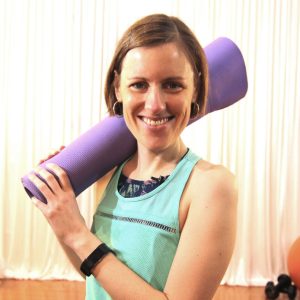Training
Combining Cognitive Challenges With Bodyweight Exercises For Older Adults

We all know the importance of maintaining both physical and cognitive health in older adults. What’s particularly interesting is that recent research is showing that, by combining cognitive challenges with physical exercises, we can supercharge the synergistic benefits for older adults.
Neuroplasticity and exercise
Studies have shown that physical exercise can enhance neuroplasticity, the brain's ability to form new neural connections. A review by Cotman et al (2007) found that exercise increases the production of brain-derived neurotrophic factor (BDNF), which supports the growth and survival of neurons. This suggests that physical activity can directly impact brain health and cognitive function.
Cognitive Benefits of exercise
Research has consistently demonstrated that physical activity can improve cognitive function in older adults. A meta-analysis by Colcombe and Kramer (2003) found that aerobic fitness training had robust but selective benefits for cognition, with the largest positive effects on executive control processes. These findings highlight the importance of incorporating regular physical activity into the routines of older adults.
Dual-Task Training
Combining cognitive tasks with physical exercises, known as dual-task training, has shown promising results. A study by Eggenberger et al (2015) found that older adults who participated in a combined physical-cognitive training program showed greater improvements in executive function compared to those who only performed physical training. This suggests that integrating cognitive challenges into physical exercises may provide additional benefits beyond physical activity alone.
Impact on Mild Cognitive Impairment (MCI)
Recent research has shown that combined physical-cognitive training can be particularly beneficial for older adults with mild cognitive impairment. A study published in BMC Medicine (2024) found that a combined program led to significant improvements in both physical and cognitive aspects, including balance, gait, strength, flexibility, cognitive function, verbal fluency, and executive functions.

01
Incorporate counting exercises into bodyweight movements
- Have participants count backwards from 100 by 3s while performing Rocking Squats
- Instruct them to count forward by 2s during Reverse Lunges
02
Combine memory tasks with exercises
- Create a sequence of upper body movements and have participants remember and repeat them
- Assign animal names to specific exercises and call them out randomly for participants to remember and perform
03
Integrate simple problem-solving tasks
- Ask participants to solve basic math problems while performing Shoulder Taps
- Have them spell words backwards during balance exercises
04
Incorporate directional changes
- Instruct participants to step left when you say "right" and vice versa during marching in place
- Use colour-coded cues for different movements, challenging participants to remember the associations
05
Engage language centres during exercise
- Ask participants to name items in a category (e.g., fruits, countries) while performing Sidewinders
- Have them create sentences where each word starts with a specific letter during Pendulums.
When implementing combined cognitive-physical exercises in your classes for older adults, safety should always be your top priority. Always prioritise proper form and technique over cognitive challenge completion. While the cognitive tasks add an important dimension to the workout, they should never compromise the physical safety of your participants. If you notice that the cognitive challenge is causing a participant to lose proper form, encourage them to focus on the physical movement first.
Start with simple cognitive tasks and gradually increase difficulty. This approach allows participants to build confidence and competence over time. Begin with basic counting or simple memory tasks, and as your class becomes more comfortable with the dual-task nature of the exercises, you can introduce more complex cognitive challenges.


Incorporating cognitive challenges into bodyweight exercises offers a powerful way to enhance both physical and mental health in older adults. By understanding the science behind this approach and implementing creative strategies, fitness professionals can provide more engaging and beneficial classes for their older adult participants.
Remember to always tailor the exercises and cognitive challenges to your specific group’s abilities and preferences. Start slowly, monitor progress, and adjust as needed to ensure a safe and effective workout experience. While cognitive challenges add value, it’s important to maintain a balance – your primary goal should still be to deliver a satisfying physical workout. Your goal should then be to integrate cognitive elements seamlessly without compromising the intensity or effectiveness of the physical exercises.

References:
- American College of Sports Medicine (ACSM) Blog (2022). Cognitive Benefits of Physical Activity for Older Adults.
- BMC Geriatrics (2020). Cognitive function of older adults engaging in physical activity.
- BMC Medicine (2024). Effect of combined physical–cognitive training on the functional and cognitive health of older adults with mild cognitive impairment: a randomized controlled trial.
- Cotman, CW, Berchtold, NC and Christie, LA (2007). Exercise builds brain health: key roles of growth factor cascades and inflammation. Trends in neurosciences, 30(9), 464-472.
- Colcombe, S., & Kramer, A. F. (2003). Fitness effects on the cognitive function of older adults: a meta-analytic study. Psychological science, 14(2), 125–130.
- Eggenberger, P., Schumacher, V., Angst, M., Theill, N., & de Bruin, E. D. (2015). Does multicomponent physical exercise with simultaneous cognitive training boost cognitive performance in older adults? A 6-month randomized controlled trial with a 1-year follow-up. Clinical interventions in aging, 10, 1335–1349.

Trudi Edmeades
Trudi Edmeades is the co-founder of Third Age Fitness, an organisation that focuses on training professionals in all aspects of older adult fitness. Their online course, Standing Bodyweight for Older Adults, includes over 180 equipment-free exercises that can be combined with cognitive challenges for older adults and seniors.